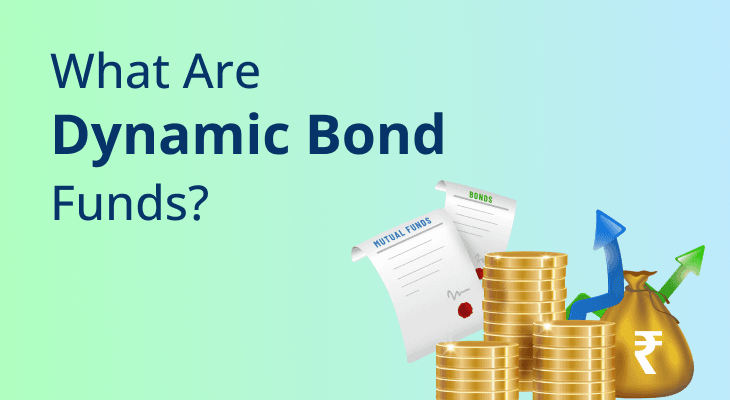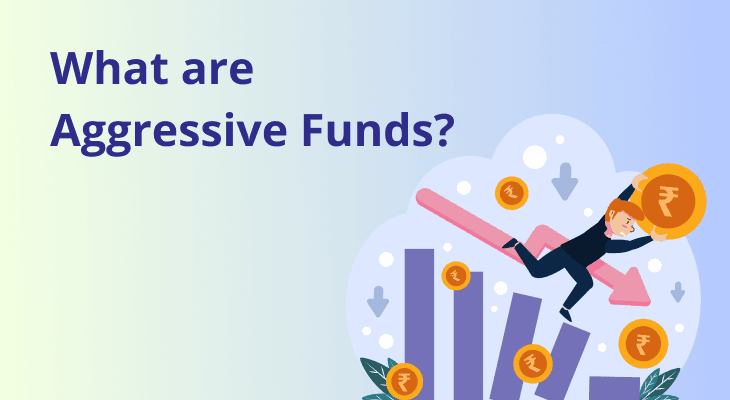
What Are Dynamic Bond Funds?
Debt mutual funds are very popular among Indian investors because of their stability and the predictable returns they have historically offered. But within this category, is yet another flexible and actively managed option, known as a dynamic bond fund. These funds don’t lock your funds into a fixed investment strategy. Instead, they change course based on the market outlook, especially interest rates. In times of economic uncertainty or changing rate cycles, this adaptability can be a major advantage for some investors.
But what exactly are dynamic bond funds? How do they differ from other debt funds? And who should consider investing in them? This article offers a comprehensive, easy-to-understand guide to dynamic bond funds. We will take a look at how they work, their benefits, the risks involved, and what you should know before investing in these instruments.
What Is A Dynamic Bond Fund?
A dynamic bond fund is a kind of debt mutual fund that invests in fixed-income vehicles like government bonds, corporate debt instruments, and money market securities. What sets them apart from your typical debt fund is their flexible strategy. The fund manager can actively switch between short-term and long-term securities depending on the expected movement of interest rates, thus optimising the risk-return tradeoff while preserving the USPs of debt instruments.
While most traditional debt funds operate with a fixed maturity range (like short or long duration funds) a dynamic bond fund has no such restriction. If interest rates are likely to fall, the fund may increase its holdings in long-duration bonds. If rates are expected to rise, its manager may shift to short-term instruments to minimise losses.
This dynamic allocation approach gives the fund its name and makes it more responsive to interest rate cycles than static debt fund categories.
How Do Dynamic Bond Funds Work?
The core function of dynamic bond funds lies in their active duration management. Duration refers to the sensitivity of a bond’s price to interest rate changes. Longer-duration bonds are more sensitive and benefit more from falling interest rates, while shorter-duration bonds offer protection when rates rise.
Here’s are a few aspects that go into the management of a dynamic bond fund:
- Macroeconomic monitoring: Fund managers keep a close watch on key economic indicators such as inflation rates, fiscal policies, RBI’s interest rate stance, global bond yields, and GDP growth forecasts.
- Interest rate forecasting: Based on their research, they form a view of whether interest rates are likely to rise, fall, or remain stable in the near term.
- Duration adjustment: The manager then adjusts the portfolio accordingly:
- In a falling rate environment, they invest in long-term bonds to lock in higher yields and benefit from capital appreciation.
- In a rising rate scenario, the manager shifts to short-term bonds to reduce risk and reinvest at higher future rates.
- Asset selection: In addition to duration, fund managers select bonds based on credit quality. Most dynamic bond funds invest in high-rated securities but some may take selective credit risks to enhance returns.
This ongoing process of review, forecast, and repositioning is what makes these funds “dynamic” in nature.
Key Benefits Of Dynamic Bond Funds
#1. Interest Rate Protection
Since interest rates fluctuate frequently due to monetary policy changes and economic cycles, dynamic bond funds aim to stay ahead of these changes. By adjusting the portfolio accordingly, they can help reduce the impact of adverse movements.
#2. Flexibility in Strategy
Unlike funds locked into short-term or long-term bonds, dynamic bond funds offer the flexibility to invest across different maturities and instruments. This gives the fund manager more tools to respond to changing conditions.
#3. Professional Management
These funds are actively managed by experienced professionals who track markets, economic data, and policy developments. As an investor, you benefit from their expertise in navigating debt markets.
#4. Diversification
Dynamic bond funds typically invest in a mix of instruments, including sovereign bonds, corporate debt, and money market securities. This mix helps spread risk across issuers, tenures, and instruments.
#5. Potential for Higher Returns
If the interest rate outlook is accurately predicted, dynamic bond funds can outperform traditional debt funds, especially during turning points in the rate cycle.
#6. Capital Stability
While not risk-free, dynamic bond funds are usually more stable than equity investments and may suit those who seek a careful balance between risk and return.
Risk Factors of Dynamic Bond Funds
Like any mutual fund, dynamic bond funds come with certain risks. Understanding them is crucial before you invest:
- Interest rate risk: Though these funds attempt to manage interest rate changes, they’re not immune to losses if the forecast is incorrect. Misjudging a rate hike or cut can negatively affect returns.
- Credit risk: If a fund chooses to invest in lower-rated corporate bonds to boost returns, there’s a risk of credit default or rating downgrade, which can impact NAV.
- Market timing: The success of dynamic bond funds heavily depends on the fund manager’s timing. Frequent or incorrect shifts in strategy can lead to inconsistent performance.
- Taxation: Dynamic bond funds are taxed like other debt funds in India. Now, capital gains from funds bought after 01/04/2023 are considered STCGs, and therefore taxed at your slab rate. However, if you invested in these funds before the above date, different rules will apply:
- If you held for less than two years, short-term capital gains are added to your income and taxed at your slab rate.
- If you sold your investment after holding for more than 2 years, your profits will fall under long-term capital gains (LTCG) and are taxed at 12.5%. No indexation benefits apply.
- Volatility: Although less volatile than equity, dynamic bond funds with longer durations can experience short-term fluctuations in NAV due to rate changes.
Who Should Consider Dynamic Bond Funds?
Dynamic bond funds can serve multiple investor profiles depending on their goals and risk appetite. Here are some cases where they may be suitable:
- Medium- to long-term debt investors: If you are looking to invest for three years or more and want better returns than fixed deposits, dynamic bond funds can be a good option, especially in a falling rate environment.
- Those looking to beat inflation: With interest rates on traditional instruments barely keeping pace with inflation, dynamic bond funds offer a chance at inflation-beating returns with relatively lower risk than equity.
- Investors seeking flexibility: These funds are ideal for those who don’t want to constantly switch between short-term and long-term debt funds based on the rate cycle. The fund manager handles this for you.
- Conservative equity investors: If you’re hesitant to invest in equities but still want some growth, dynamic bond funds offer a good balance between stability and return potential.
- SIP-based income builders: Some investors use systematic investment plans (SIPs) in dynamic bond funds as a way to build a corpus slowly, while earning regular interest income.
Additional Read: Different Types of Systematic Investment Plans and Their Benefits
Dynamic Bond Funds vs Traditional Debt Funds
Below is a comprehensive breakdown of all the key differences between a dynamic bond fund and a traditional debt fund.
Criteria | Dynamic Bond Funds | Traditional Debt Funds |
|---|---|---|
Maturity Profile | Flexible, changes with outlook | Fixed (short, medium, long) |
Strategy | Actively managed | Mostly passive or static |
Return Potential | Higher (if managed well) | Moderate and predictable |
Interest Rate Sensitivity | Adjusted proactively | Depends on fund category |
Risk | Moderate | Varies by category |
Suitable Horizon | 3 years and above | 1–5 years depending on type |
Conclusion
Dynamic bond funds offer a smart alternative to traditional fixed-income products, especially in a world where interest rates are being constantly readjusted to tackle complex macroeconomic environments. Their ability to adjust investment duration and strategy according to market conditions makes them well-suited for investors looking for more than just passive income from their debt investments.
However, like any investment vehicle, dynamic bond funds are not without risks. Their performance depends significantly on the fund manager’s skill in navigating interest rate trends. That’s why, investors should approach these funds cautiously, and ideally with a long-term view (three years or more). Moreover, it is prudent to periodically review the fund’s performance and keep track of important announcements.
To sum up, if you're seeking inflation-beating returns with manageable risk, and are comfortable trusting an experienced fund manager with your debt portfolio, then a dynamic bond fund could be a worthy addition to your investment strategy.
Additional Read: Different Types of Mutual Funds Scheme in India
FAQ
What are dynamic bond funds?
Dynamic bond funds are debt mutual funds that invest in a mix of short-term and long-term bonds. The fund manager actively adjusts the portfolio based on the expected interest rate movements.
How are dynamic bond funds different from other debt funds?
Traditional debt funds are constrained to fixed maturity ranges. Dynamic bond funds, however, can switch across durations, giving them more flexibility to manage interest rate risks.
Are dynamic bond funds safe?
While considered safer than equity, dynamic bond funds still carry interest rate and credit risks. The risk level is moderate, and returns are not guaranteed.
What is the ideal investment horizon for dynamic bond funds?
These funds are best suited for investors with a medium- to long-term horizon of at least three years to smooth out short-term volatility and benefit from compounding.
Do dynamic bond funds offer monthly income?
Dynamic bond funds earn interest from their bond holdings, and some offer dividend options. However, dividends are not guaranteed. For regular income, consider a systematic withdrawal plan (SWP) instead.
Are dynamic bond funds good during rising interest rates?
During rising rates, the fund manager may reduce the average maturity of the portfolio to limit losses. While not immune to declines, dynamic bond funds handle rising rate risks better than long-duration funds.


